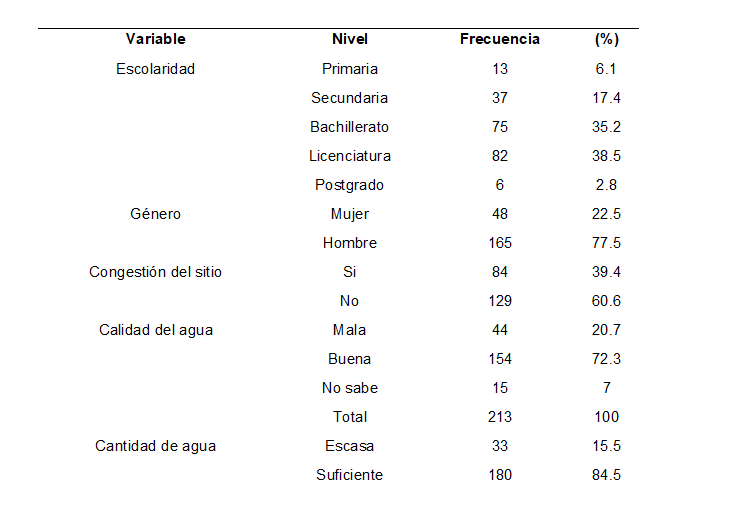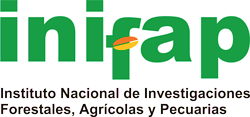Econometric estimation of the surplus of the consumer of recreational environmental services
DOI:
https://doi.org/10.29312/remexca.v16i5.3706Keywords:
public goods, Poisson regression, truncated dependent variableAbstract
Public goods, such as forests, rivers, lakes, or dams, provide recreational services that lack market prices. This research aimed to estimate the consumer surplus proposed by the microeconomic theory to make a valuation of recreational environmental services using the individual travel cost methodology. The sample used consisted of 213 observations and was collected in four recreational sites located in the area of the La Boquilla Dam, municipality of Camargo, Chihuahua within the Conchos River basin in 2019. The method used for econometric estimation was the Poisson regression model since the number of visits to the site is a count variable. The average surplus benefit per visitor was MX$33.12 (US$1.72). The research assumed an influx of 300 000 visitors, so the value of the recreational environmental service generated by the La Boquilla Dam in the year the research was carried out (2019) would have been MX$9 936 000 (US$515 888). It is concluded that the Poisson model is the one that best fits the count data obtained through the travel cost method and that the results could be useful to guide the design of environmental policies.
Downloads
References
Bibliografía
Blaine, T. W.; Lichtkoppler, F. R.; Bader, T. J.; Hartman, T. J. and Lucente, J. E. 2015. An examination of sources of sensitivity of consumer surplus estimates in travel cost models. Journal of Environmental Management. 151(3):427-436. Doi:10.1016/j.jenvman.2014.12.033.
Boyle, K. J. 2003. Introduction to revealed methods. In: Champ, P. A.; Boyle, J. K. and Brown, C. T Ed. Springer.
Cameron, A. C. and Trivedi, P. K. 2013. Regression analysis of count data. Cambridge University Press. 598 p.
Coxe, S.; West, S. G. and Aiken, L. S. 2019. Applied count data analysis. Guilford Press.
Dixon, J. y Pagiola, S. 1998. Análisis económico y evaluación ambiental. Environmental Assessment Source Book. The World Bank. https://documents1.worldbank.org/curated/en/505811468149073439/pdf/WTP1400SPANISH10Box338902B01PUBLIC1.pdf.
Edwards, P. E. T.; Parsons, G. R. and Myers, K. H. 2011. The economic value of viewing migratory shorebirds on Delaware Bay: an application of the single site travel cost model using on-site data. Human Dimensions of Wildlife. 16(6):435-444. Doi:10.1080/10871209.2011.608180.
Freeman, M.; Herriges, J. A. and Kling, C. L. 2014. The measurement of environmental and resource values. Third Ed. RFF Press.
Greene, W. H. 2018. Econometric analysis 8th Ed. Pearson. 1176 p.
Grilli, G.; Landgraf, G.; Curtis, J. and Hynes, S. 2019. A travel cost evaluation of the benefits of two destination salmon rivers in Ireland. Journal of Outdoor Recreation and Tourism. 25(1):1-7. https://doi.org/10.1016/j.jort.2018.10.003.
Hernández, T. V.; Avilés, P. G.; Ponce, D. G. y Lluch, B. D. 2017. Estimación de cuotas diferenciadas para permisos de pesca deportiva en Los Cabos, México. Un enfoque de costo de viaje. Economía. Teoría y Práctica. Nueva Época. 46:17-36. http://dx.doi.org/10.24275/etypuam/ne/542021/solis.
Hilbe, J. M. 2014. Modeling count data. Cambridge University Press, New York, USA. 300 p.
Kipperberg, G.; Onozaka, Y.; Bui, L. T.; Lohaugen, M.; Refsdal, G. and Sæland, S. 2019. The impact of wind turbines on local recreation: evidence from two travel cost method-contingent behavior studies. Journal of Outdoor Recreation and Tourism. 25(1):66-75. Doi:https://doi.org/10.1016/j.jort.2018.11.004.
Limaei, S. M.; Ghesmati, H.; Rashidi, R. and Yamini, N. 2014. Economic evaluation of natural forest park using the travel cost method (case study; Masouleh forest park, north of Iran. Journal of Forest Science. 60(6):254-261. Doi:10.17221/84/2013-JFS.
Morales, Z. M. V.; Almendarez, H. M. A.; Sánchez, B. I. y Salinas, Z. C. A. 2019. Valoración económica del servicio ecosistémico recreativo de playa en Los Cabos, Baja California Sur (BCS), México: una aplicación del método de costo de viaje. El Periplo Sustentable. 36:447-469. https://www.scielo.org.mx/pdf/eps/n36/1870-9036-eps-36-447.pdf.
Parsons, G. R. and Myers, K. 2022. Individual travel cost method with endogenous stratification: a semiparametric approach. Land Economics. 98(1):65-85. Doi:https://doi.org/10.3368/le.98.1.65.
Rubio, A. H. O.; Ortiz, D. R. C.; Quintana, M. R. M.; Saucedo, T. R. A.; Ochoa, R. J. M. y Rey, B. N. I. 2014. Índice de calidad de agua (ICA) en la presa La Boquilla en Chihuahua, México. Ecosistemas y Recurso Agropecuarios. 1(2):139-150. https://www.scielo.org.mx/pdf/era/v1n2/v1n2a5.pdf.
Voltaire, L.; Lévi, L.; Alban, F. and Boncoeur, J. 2020. Valuing cultural world heritage sites: An application of the travel cost method to Mont-Saint-Michel. Applied Economics. 52(16):1758-1774. Doi: https://doi.org/10.1080/00036846.2019.1677839.
Wilman, E. A. and Pauls, R. J. 1987. Sensitivity of consumers’ surplus estimates to variation in the parameters of the travel cost model. Canadian Journal of Agricultural Economics. 35:197-2012.
Winkelmann, R. 2021. Econometric analysis of count data 6th Ed. Springer. 282 p.
Zeileis, A.; Kleiber, C. and Jackman, S. 2020. Regression models for count data in R. Journal of Statistical Software. 27(8):1-25. Doi:https://doi.org/OI:10.18637/jss.v027.i08.

Published
How to Cite
Issue
Section
License
Copyright (c) 2025 Revista Mexicana de Ciencias Agrícolas

This work is licensed under a Creative Commons Attribution-NonCommercial 4.0 International License.
The authors who publish in Revista Mexicana de Ciencias Agrícolas accept the following conditions:
In accordance with copyright laws, Revista Mexicana de Ciencias Agrícolas recognizes and respects the authors’ moral right and ownership of property rights which will be transferred to the journal for dissemination in open access. Invariably, all the authors have to sign a letter of transfer of property rights and of originality of the article to Instituto Nacional de Investigaciones Forestales, Agrícolas y Pecuarias (INIFAP) [National Institute of Forestry, Agricultural and Livestock Research]. The author(s) must pay a fee for the reception of articles before proceeding to editorial review.
All the texts published by Revista Mexicana de Ciencias Agrícolas —with no exception— are distributed under a Creative Commons License Attribution-NonCommercial 4.0 International (CC BY-NC 4.0), which allows third parties to use the publication as long as the work’s authorship and its first publication in this journal are mentioned.
The author(s) can enter into independent and additional contractual agreements for the nonexclusive distribution of the version of the article published in Revista Mexicana de Ciencias Agrícolas (for example include it into an institutional repository or publish it in a book) as long as it is clearly and explicitly indicated that the work was published for the first time in Revista Mexicana de Ciencias Agrícolas.
For all the above, the authors shall send the Letter-transfer of Property Rights for the first publication duly filled in and signed by the author(s). This form must be sent as a PDF file to: revista_atm@yahoo.com.mx; cienciasagricola@inifap.gob.mx; remexca2017@gmail.
This work is licensed under a Creative Commons Attribution-Noncommercial 4.0 International license.


